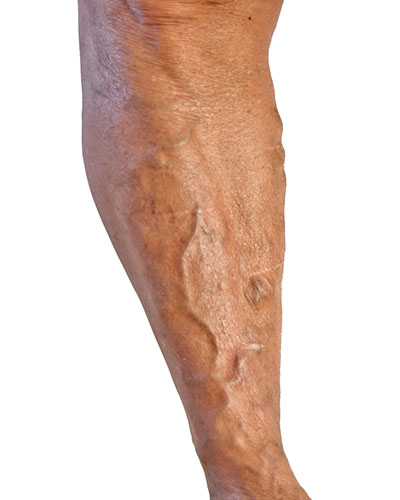Condition - Varicose Veins
What Is
Varicose Veins?
Large bulging veins in the legs that can cause many different types of symptoms.
Varicose veins can occur in almost anyone and affect up to 35% of people in the United States. You may inherit a tendency to develop varicose veins from a parent. Women, women who have had multiple children, and obese persons are at a higher risk.

Symptoms
MAY BE ABSENTYou may have no symptoms.
PAIN & DISCOMFORTPain, itching, swelling, burning, leg heaviness or tiredness, skin discoloration. Symptoms typically worsen throughout the day and are partially relieved by elevation or wearing compression socks or stockings.
Sometimes, varicose veins clot and become painful, hot, hard and discolored. This is called phlebitis, an uncomfortable but temporary condition that will get better on its own in 2-3 months. Clots associated with phlebitis are limited to surface veins, and not dangerous - unlike clots in the deep veins (deep vein thrombosis or DVT) that are dangerous because they can travel to the heart or lung and require prompt treatment with blood thinners.
BLEEDINGA shower or minor trauma can cause a varicose vein to burst and bleed.
SKIN TEARSSkin tears or ulceration indicate a very severe case.
